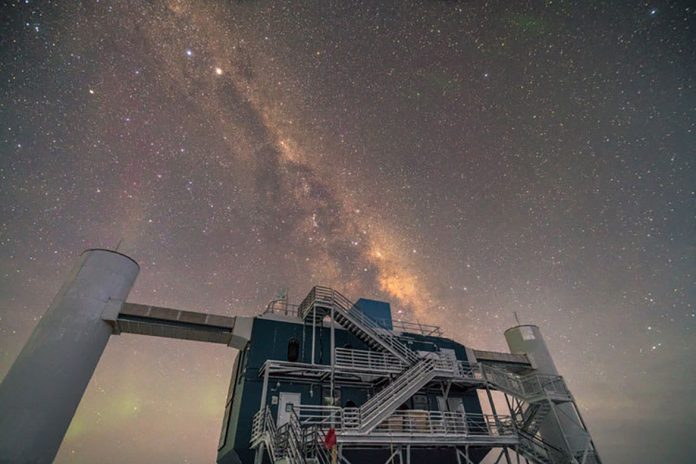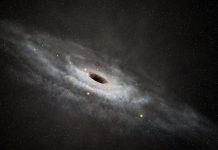Deep in the Antarctic ice, there is a powerful observatory that doesn’t see light; it sees neutrinos
These ghost-like particles are almost invisible, passing through matter undisturbed. The IceCube Neutrino Observatory recently detected something unusual coming from the Squid Galaxy, officially known as NGC 1068. It observed an unusually strong stream of high-energy neutrinos but without the expected matching signal of gamma rays.
Usually, when high-energy neutrinos are produced in space, they are accompanied by equally strong gamma rays. This wasn’t the case for NGC 1068, sparking new theories about what might be happening around its central black hole.
A new theory
Researchers from UCLA, the University of Osaka, and the Kavli Institute for the Physics and Mathematics of the Universe have devised a new idea. They suggest that the neutrinos from NGC 1068 aren’t being produced by protons, as previously thought, but instead by helium nuclei.
According to their model, these helium nuclei are accelerated in powerful jets near the galaxy’s central supermassive black hole. They break apart when they collide with ultraviolet photons in this intense environment. The resulting neutrons then decay into neutrinos without producing significant gamma rays.
Why helium matters
Hydrogen and helium are the most abundant elements in the universe. However, when hydrogen atoms (essentially just protons) collide with photons, they produce both neutrinos and gamma rays. Helium nuclei, which include two protons and two neutrons, behave differently. When these nuclei break apart, the neutrons released decay into neutrinos to avoid creating strong gamma-ray signals.
This process explains why IceCube saw a strong neutrino signal from NGC 1068 but only a faint glow of gamma rays. It also suggests that other galaxies with similar hidden environments may be producing neutrinos that have so far gone undetected.
New findings in astronomy
The findings offer new insight into the extreme conditions near supermassive black holes. Scientists don’t fully understand these environments, but this new theory provides a valuable tool for exploring them.
The research also hints at a better future for neutrino astronomy. As telescopes revolutionised our view of the universe through light, neutrino detectors are opening new doors to understanding cosmic phenomena invisible to traditional instruments.
Long-term impact beyond astronomy
Studying particles like neutrinos has historically led to significant technological advances. Discoveries once seen as purely theoretical, such as the electron or magnetic resonance, have become important in modern life, from electronics to medical imaging.
This research, supported by U.S. and Japanese science organisations, highlights the importance of continued investment in basic science. While the practical uses may not be immediate, history suggests they could transform the future unexpectedly.
As neutrino observatories gather data, scientists hope to confirm their new theory by studying similar galaxies.











